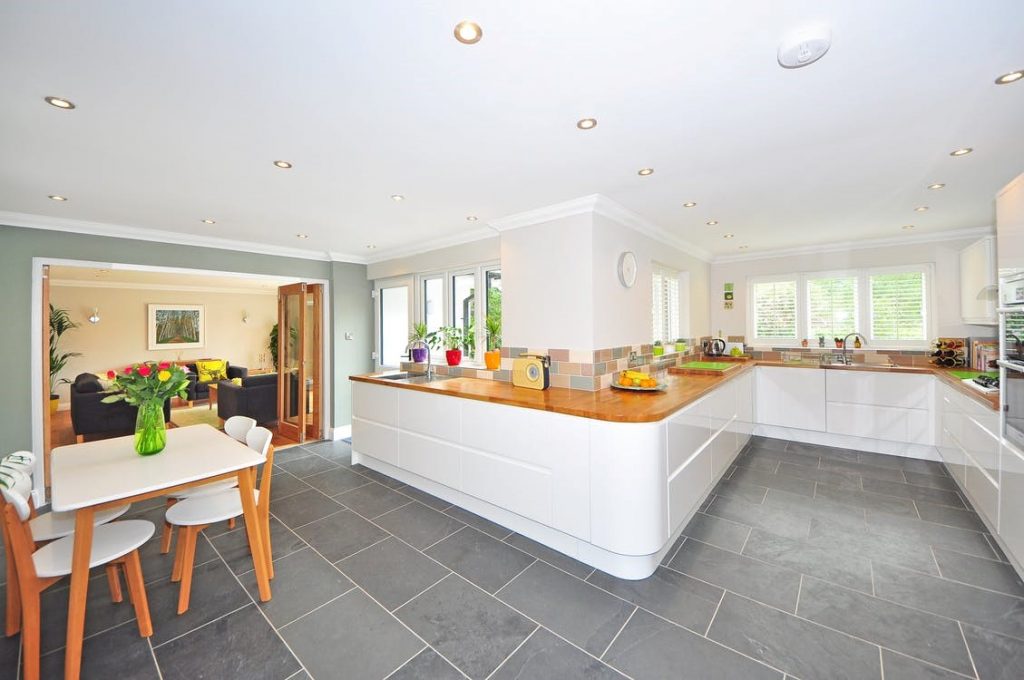
Despite the big push in the UK to conserve energy and make our homes more energy efficient, our home heating is often left forgotten. If you are considering a new heating system, you have probably already read all about underfloor heating. But, how environmentally friendly is this modern heating system and is it worth the investment?
For a long time, underfloor heating has been considered to be a luxury product. More recently, it’s being seen as an energy efficient investment. The vast majority of homeowners in the UK are still using traditional radiator heating to heat their homes. This can be both impractical at heating large rooms and ineffective on energy use.
As a modern heating system designed to reduce the cost of heating a home, underfloor heating is being highly promoted by many suppliers in the industry. There are a number of ways that underfloor heating is much more environmentally friendly than other options on the market.
Operates at a Lower Temperature
Generally, underfloor heating operates at a lower temperature when compared to standard radiators. The temperature that your underfloor heating will reach is primarily dependant on which type of flooring you have. Solid tiles allow the floor to reach around 29 degrees, while vinyl, carpet, and wood flooring can only reach a maximum of 27 degrees. As this is lower than traditional heating methods less energy is expended. For these reasons, underfloor heating more energy efficient.
Regulates Heat in a Larger Space
Radiators placed at the sides of rooms are not known to be efficient at heating large spaces. The majority of the heat stays around the radiator. The heat will eventually flow upwards and away from the area you want heating. As underfloor heating heats the entirety of your room, there are no cold spots and the heat is dispersed evenly.
It’s unlikely that once you turn your radiators off for the night they will do much to keep the heat levels up in your home. Underfloor heating can retain heat for a good length of time after switching it off. Depending on which flooring you have, the retention will be slightly different. The best flooring for thermal retention should keep your floors warm for quite a while. This means that you can turn your heating off earlier and use less energy without impacting the heat of your home.
It’s Quicker to Heat a Room
The even distribution of heat also allows a room to heat up more quickly and stay warm. While radiators have to work hard and burn through more energy to increase the temperature in a room, the large surface area that underfloor heating covers make the task easier and quicker. Once a room is up to temperature, less energy needs to be used to maintain that temperature.
Alternative Heating Options
Underfloor heating comes in two different types, water heating and electric heating. There are different pros and cons to each type, but both can be powered using renewable energy from various sources. A renewable energy resource is much more beneficial to the environment than using fossil fuels. It can also significantly lower your heating bills, and reduce the carbon footprint of your home.
Both types of underfloor heating can be powered using solar panels on the roof of a property or wind turbines, significantly increasing its energy efficiency. Alternatively, the water-based underfloor heating can be heated using heat pumps. These are pipes which are installed in your garden and extract ground heat. The temperature of the ground is relatively constant, so there are no limits to the times of year that a ground pump can be used.
Cleaner and Less Polluted Air
The air that is circulated from underfloor heating is cleaner than the air pushed around by radiators. Along with warm air, radiators push around moisture. Having moisture in the air can result in damp and mould forming, reducing the air quality of your home environment.
While investing in underfloor heating can help to make your home more environmentally friendly, how environmentally friendly your heating is can also be determined by several external factors. It’s important to consider to what level your home is insulated, how old your boiler is, and whether your property is prone to draughts. All of these can influence how effective your heating is, how much heat is lost from your home, and how much you’re paying for your energy. However, for an eco-friendly heating system, underfloor heating is an excellent option.

1 comment. Leave new